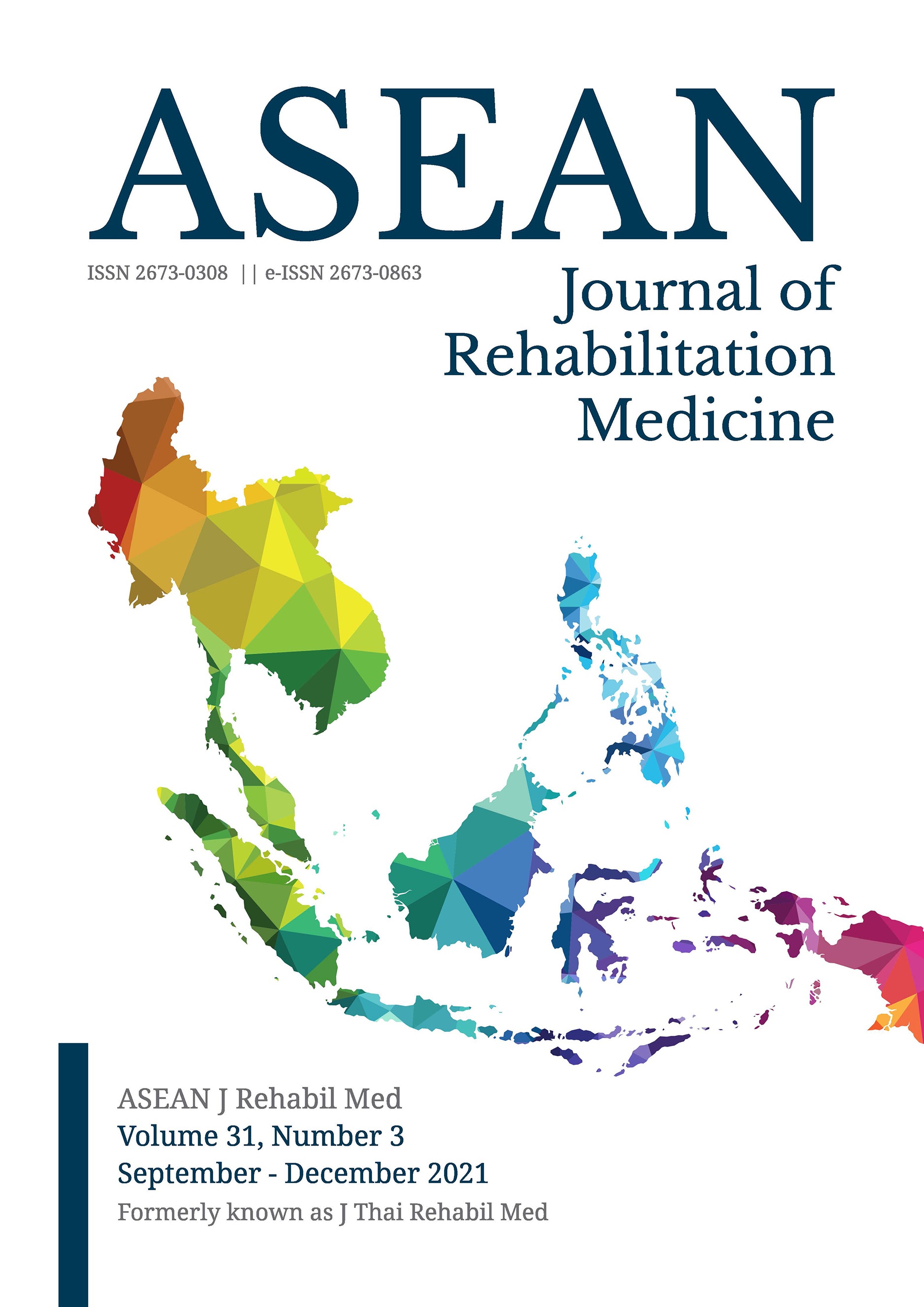Purple Urine Bag Syndrome in a Paraplegic Woman with a Long-Term Indwelling Catheter and Asymptomatic Urinary Tract Infection: A Case Report
Keywords:
purple urine, urinary tract infection, urinary catheter, , indwelling catheter, paraplegiaAbstract
Objectives: To report on points of concern in a paraplegic patient with a neurogenic bladder who presented with purple urine in a urine bag.
Study design: A case report.
Setting: Department of Rehabilitation Medicine, Maharat Nakhon Ratchasima Hospital, Thailand.
Subjects: A 32-year-old paraplegic woman with long-term use of an indwelling catheter.
Methods: The patient’s medical record, including demographic data, clinical presentation and laboratory results as well as urologic ultrasonography, treatment, and outcome were reviewed.
Results: A patient with an indwelling transurethral catheter presented with a second episode of smelly purple urine for three days. She had no fever. She remained in bed due to an undiagnosed right hip fracture, a pressure ulcer, and chronic osteomye-litis of the right greater trochanter. A urine strip showed positive nitrite and a culture showed the presence of E. coli. Ultrasono-graphy showed no renal or bladder stones. After three days of intravenous antibiotic treatment, the purple urine completely resolved.
Conclusions: Paraplegic patients with a long-term indwelling catheter, asymptomatic urinary tract infection with purple urine should receive prompt and appropriate antibiotic therapy.
Keywords: purple urine, urinary tract infection, urinary catheter, indwelling catheter, paraplegia
References
Arnold WN. King George III’s urine and indigo blue. Lancet. 1996; 347:1811–3.
Kalsi DS, Ward J, Lee R. Purple urine bag syndrome: a rare spot diagnosis. Dis Markers. 2017;2017:931872.
Su FH, Chung SY, Chen MH, Sheng ML, Chen CH, Chen YJ, Chang WC, Wang LY, Sung KY. Case analysis of purple urine-bag syndrome at a long-term care service in a community hospital. Chang Gung Med J. 2005;28:636-42.
Yang HW and Su YJ. Trends in the epidemiology of purple urine bag syndrome: a systematic review. Biomed Rep. 2018;18:249–56.
Worku DA. Purple urine bag syndrome: An unusual but important manifestation of urinary tract infection. Case report and literature review. SAGE Open Med Case Rep. 2019;7:1-4.
Wong Y, Abdullah N. Purple urine bag syndrome: A startling phenomenon of purple urine in a urine drainage bag. A primary care approach and literature review. Malays Fam Physician. 2018;13:42-4.
Sabanis N, Paschou E, Papanikolaou P, Zagkotsis G. Purple urine bag syndrome: more than eyes can see. Curr Urol. 2019;13:125-32.
Su YJ, Yang HW. Risk factors of mortality in patients with purple urine bag syndrome. J Drug Assess. 2019;8:21-4.
Tul Llah S, Khan S, Dave A, Morrison AJA, Jain S, Hermanns D. A case of purple urine bag syndrome in a spastic partial quadriplegic male. Cureus. 2016;8:e552. doi:10.7759/cureus.552
Lee JP, Dang AT. Evaluation of methods to estimate glomerular filtration rate versus actual drug clearance in patients with chronic spinal cord injury. Spinal Cord. 2011;49:1158-63.
Wyndaele JJ, Madersbacher H, Kovindha A. Conservative treatment of the neuropathic bladder in spinal cord injured patients. Spinal Cord. 2001;39:294-300.
Pongboriboon P, Tongprasert S, Kovindha A. Quality of life in persons with spinal cord injury: a comparative study between those with indwelling catheterization and intermittent catheterization. J Thai Rehabil Med. 2011;21:13–20.
Wyndaele JJ, Kovindha A, Igawa Y, Madersbacher H, Radziszewski P, Ruffion A, Schurch B, Castro D, Sakakibara R, Wein A; ICI 2009 Committee 10. Neurologic fecal incontinence. Neurourol Urodyn. 2010;29:207-12.
Khamrueangsri K, Kovindha A. The study of stool forms and related factors in chronic spinal cord injured patients. J Thai Rehabil Med. 2015;25:6-14.
Downloads
Published
How to Cite
Issue
Section
License
Copyright (c) 2021 ASEAN Journal of Rehabilitation Medicine

This work is licensed under a Creative Commons Attribution-NonCommercial-NoDerivatives 4.0 International License.






